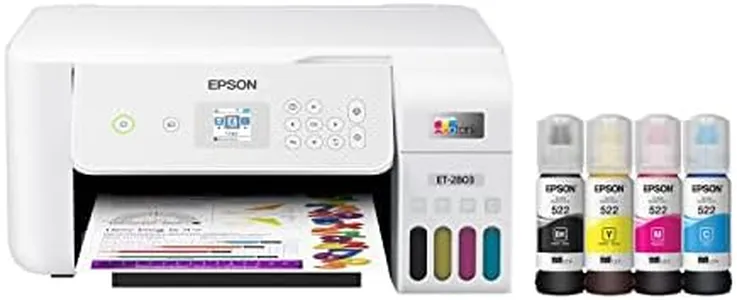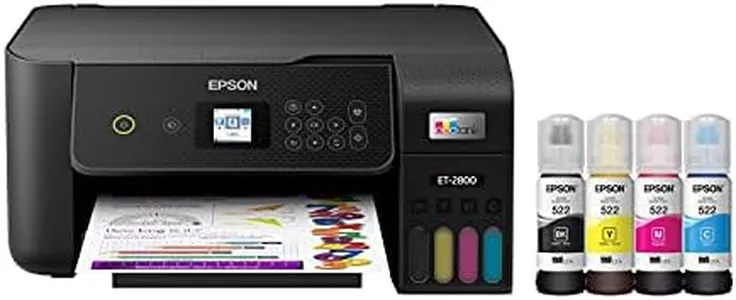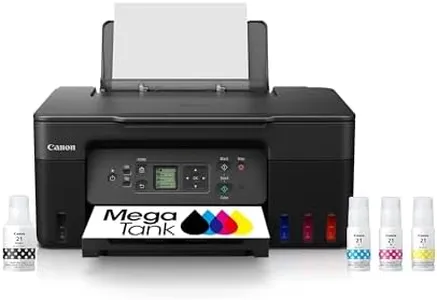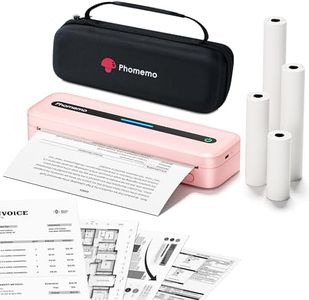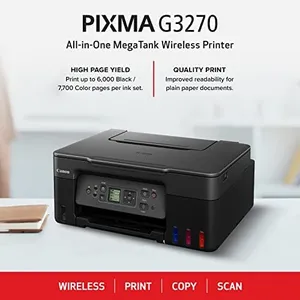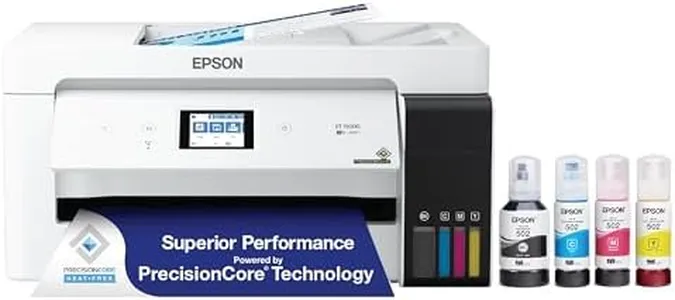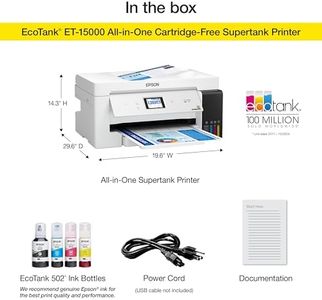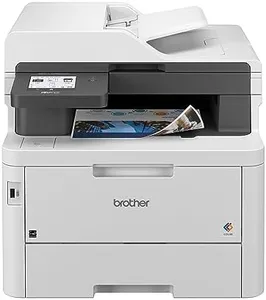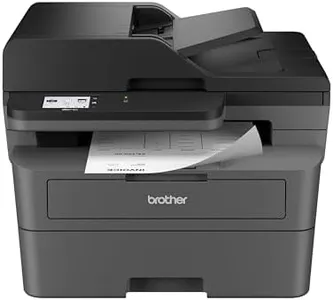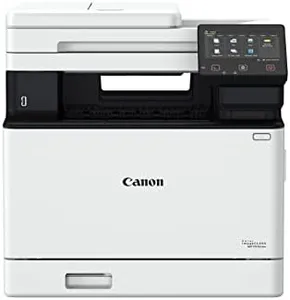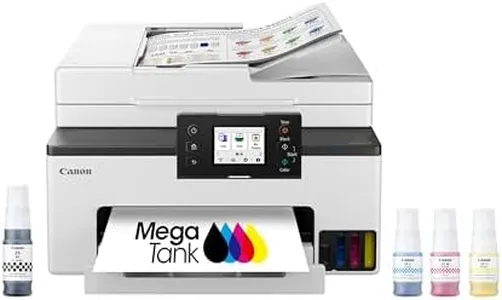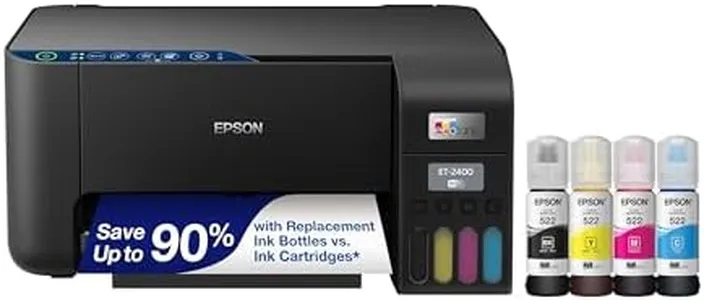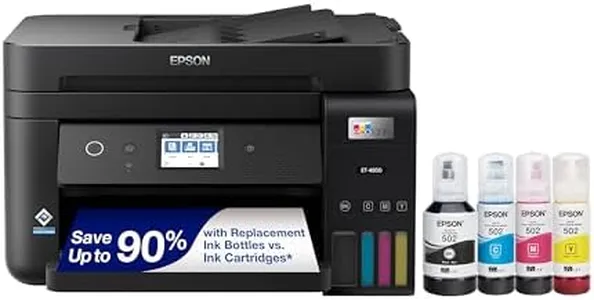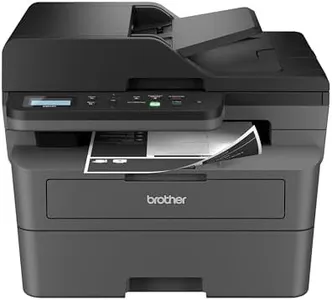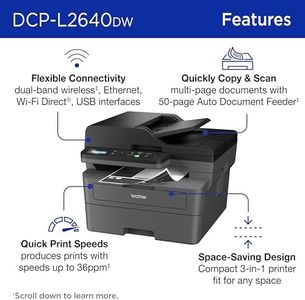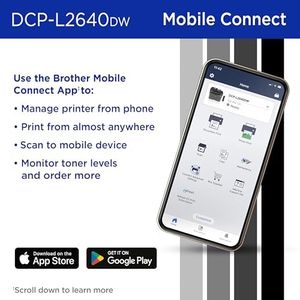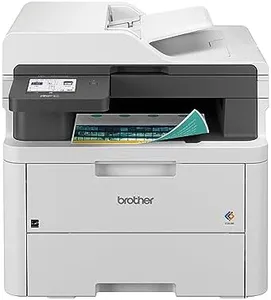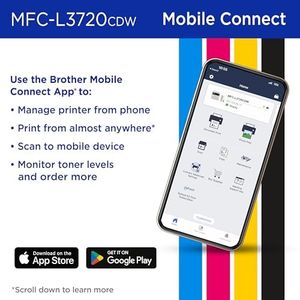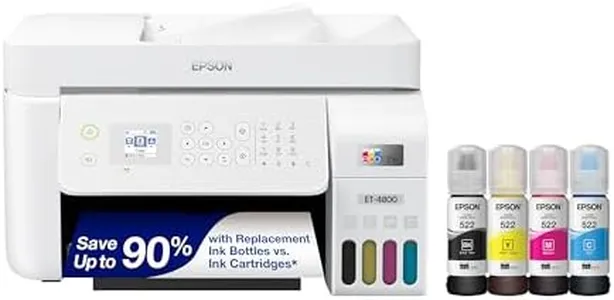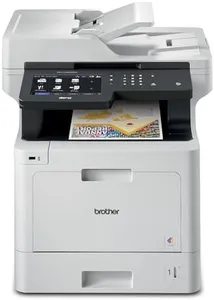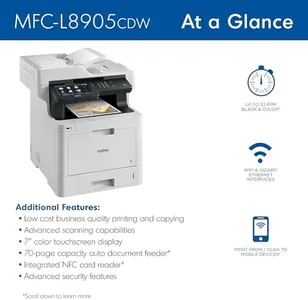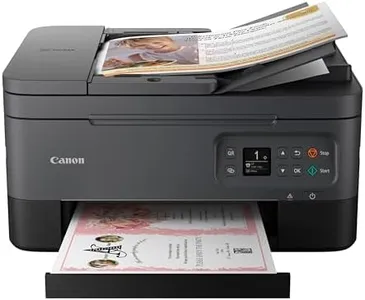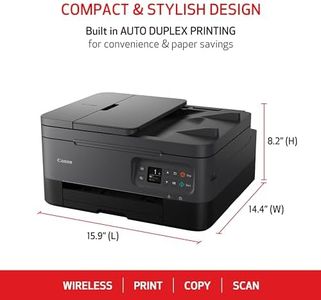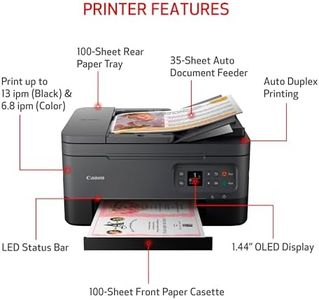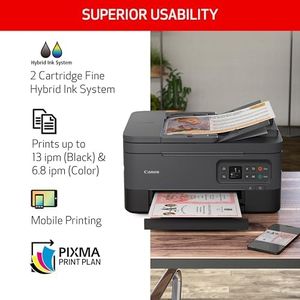10 Best All-In-One Wireless Printers 2025 in the United States
Winner
Epson EcoTank ET-2803 Wireless Color All-in-One Cartridge-Free Supertank Printer with Scan, Copy and AirPrint Support
The Epson EcoTank ET-2803 is a wireless all-in-one printer designed for home or small office use, especially if you want to save on ink costs. Its standout feature is the refillable ink tank system, which reduces the need to buy traditional cartridges frequently, helping keep running costs low. The print quality is quite good, offering sharp color and black-and-white prints with a high resolution of up to 5760 x 1440 dpi, making photos and documents look clear. However, the print speed is on the slower side—up to 10 pages per minute for black and white and 5 for color—so it might not be the best choice if you print large volumes quickly.
Most important from
17122 reviews
Epson EcoTank ET-2800 Wireless Color All-in-One Cartridge-Free Supertank Printer with Scan and Copy – The Ideal Basic Home Printer - Black, Medium
The Epson EcoTank ET-2800 is a wireless color all-in-one printer designed to cater to basic home printing needs. One of its standout features is the innovative cartridge-free printing system, which uses high-capacity ink tanks instead of traditional cartridges. This system can significantly reduce ink costs, offering up to 90% savings compared to cartridges, and includes enough ink to last for up to 2 years, translating to fewer interruptions for ink replacements.
Most important from
17122 reviews
Canon MegaTank G3270 All-in-One Wireless Inkjet Printer. for Home Use, Print, Scan and Copy
The Canon MegaTank G3270 is a solid choice for home users looking for an all-in-one wireless printer that handles printing, scanning, and copying. Its standout feature is the MegaTank ink system, providing up to two years of ink with a single set and allowing you to print thousands of pages, which can save a lot on ink costs compared to traditional cartridges. Print quality is good, with a high resolution of 4800 x 1200 dpi, making photos and documents look sharp and clear. The print speed is decent for home use—up to 11 pages per minute in black and 6 pages per minute in color—but it’s not the fastest, so if you need quick printing in large volumes, it might feel a bit slow.
Most important from
4372 reviews
Top 10 Best All-In-One Wireless Printers 2025 in the United States
Winner
Epson EcoTank ET-2803 Wireless Color All-in-One Cartridge-Free Supertank Printer with Scan, Copy and AirPrint Support
Epson EcoTank ET-2803 Wireless Color All-in-One Cartridge-Free Supertank Printer with Scan, Copy and AirPrint Support
Chosen by 1142 this week
Epson EcoTank ET-2800 Wireless Color All-in-One Cartridge-Free Supertank Printer with Scan and Copy – The Ideal Basic Home Printer - Black, Medium
Epson EcoTank ET-2800 Wireless Color All-in-One Cartridge-Free Supertank Printer with Scan and Copy – The Ideal Basic Home Printer - Black, Medium
Canon MegaTank G3270 All-in-One Wireless Inkjet Printer. for Home Use, Print, Scan and Copy
Canon MegaTank G3270 All-in-One Wireless Inkjet Printer. for Home Use, Print, Scan and Copy
Brother MFC-L3780CDW Wireless Digital Color All-in-One Printer with Laser Quality Output, Single Pass Duplex Copy & Scan | Includes 2 Month Refresh Subscription Trial, Works with Alexa
Brother MFC-L3780CDW Wireless Digital Color All-in-One Printer with Laser Quality Output, Single Pass Duplex Copy & Scan | Includes 2 Month Refresh Subscription Trial, Works with Alexa
Brother DCP-L2640DW Wireless Compact Monochrome Multi-Function Laser Printer with Copy and Scan, Duplex, Mobile, Black & White | Includes Refresh Subscription Trial(1), Works with Alexa
Brother DCP-L2640DW Wireless Compact Monochrome Multi-Function Laser Printer with Copy and Scan, Duplex, Mobile, Black & White | Includes Refresh Subscription Trial(1), Works with Alexa
Epson EcoTank ET-4800 Wireless All-in-One Cartridge-Free Supertank Printer with Scanner, Copier, Fax, ADF and Ethernet – Ideal-for Your Home Office, White
Epson EcoTank ET-4800 Wireless All-in-One Cartridge-Free Supertank Printer with Scanner, Copier, Fax, ADF and Ethernet – Ideal-for Your Home Office, White
Brother Color Laser All-in-One Printer with Advanced Security, High-Speed 33ppm Printing, Wireless Network, 7 in Touchscreen, Duplex Print and Scan for Business (MFC-L8905CDW)
Brother Color Laser All-in-One Printer with Advanced Security, High-Speed 33ppm Printing, Wireless Network, 7 in Touchscreen, Duplex Print and Scan for Business (MFC-L8905CDW)
Our technology thoroughly searches through the online shopping world, reviewing hundreds of sites. We then process and analyze this information, updating in real-time to bring you the latest top-rated products. This way, you always get the best and most current options available.

